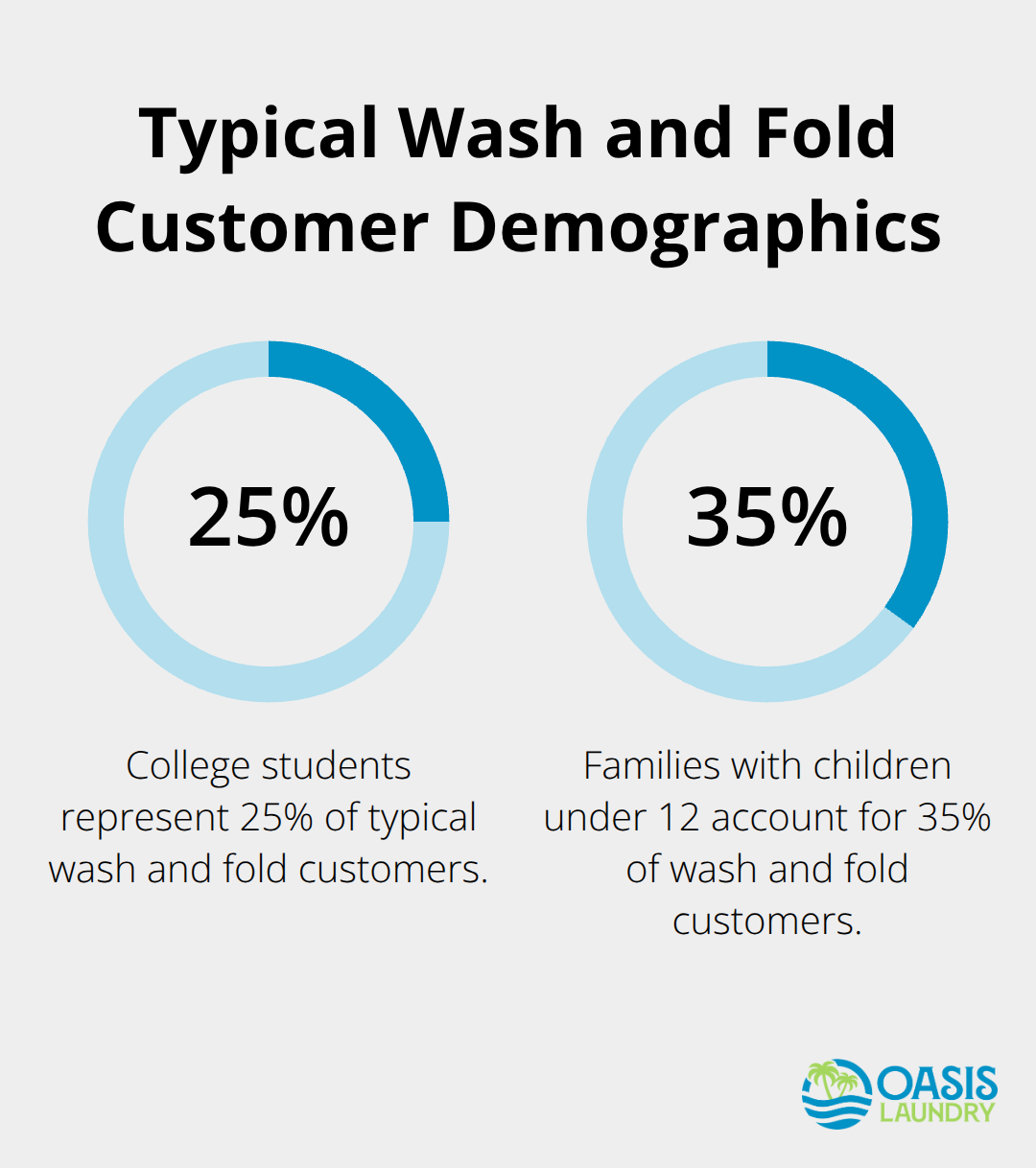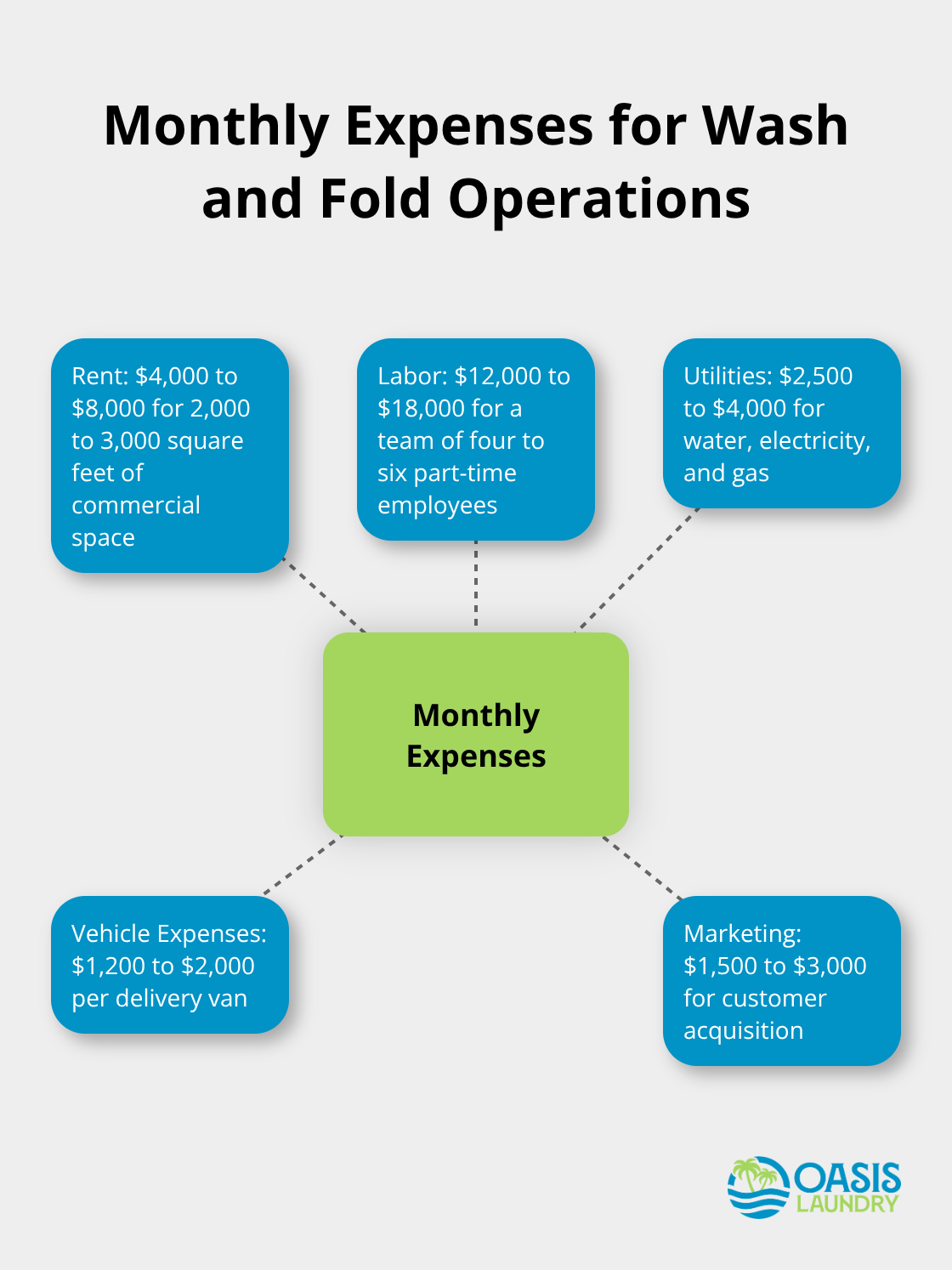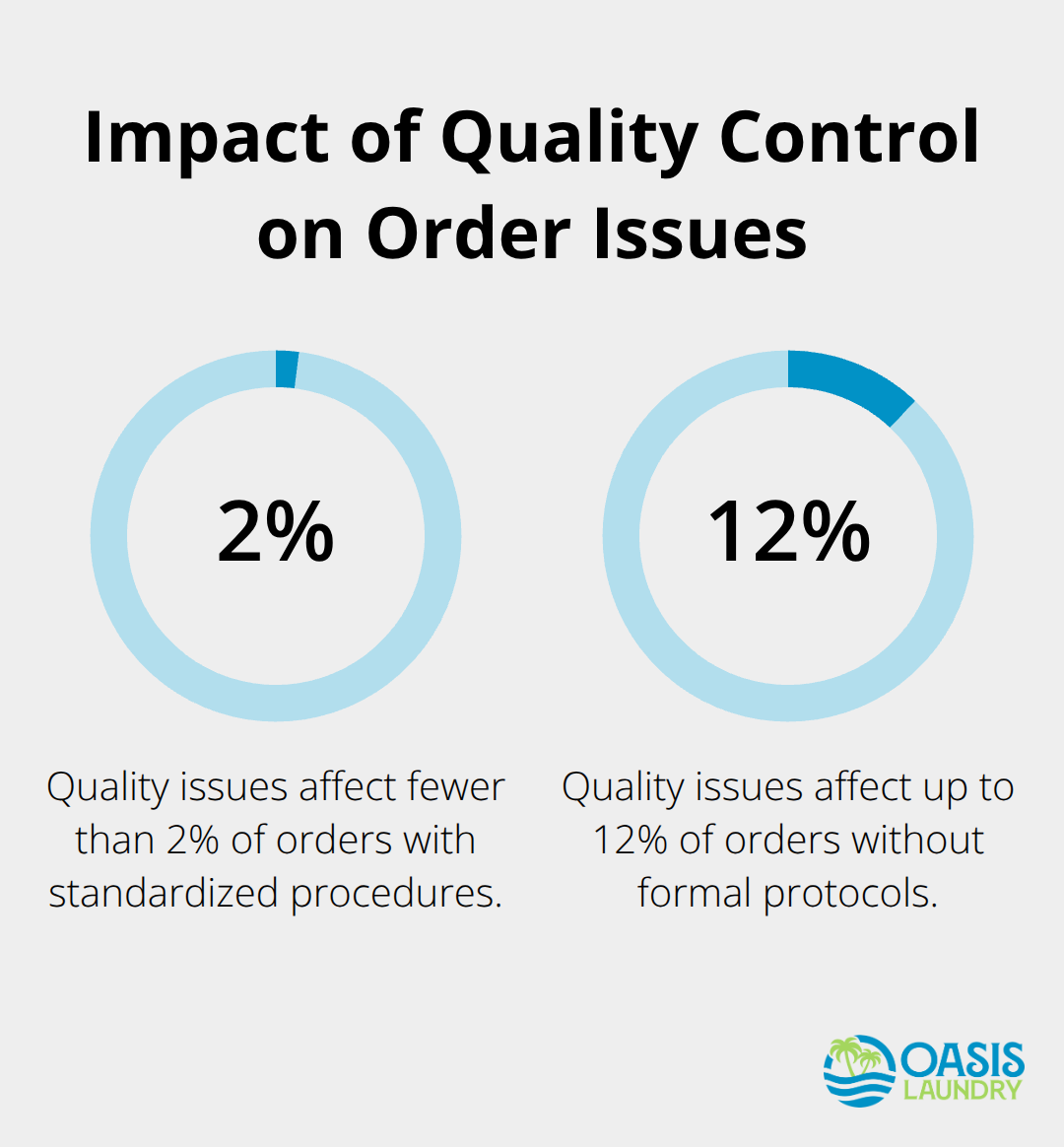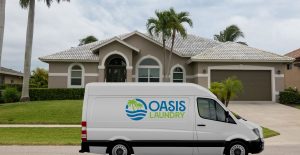Starting a wash and fold business requires more than just washing machines and good intentions. A solid wash and fold business plan serves as your roadmap to profitability.
We at Oasis Laundry have seen countless entrepreneurs succeed by following proven planning strategies. The difference between thriving businesses and failed ventures often comes down to thorough preparation and realistic financial projections.
Market Research and Business Analysis
Smart market research starts with a walk through your service area at different times during the week. Count apartment complexes, identify busy professionals who rush to work, and note existing laundry services. The laundry market grows at 3.1% annually according to industry data, but local demand varies dramatically. Areas with high apartment density generate 40% more wash and fold customers than suburban neighborhoods with single-family homes.
Competition Analysis That Actually Matters
Visit every competitor within a five-mile radius during peak hours. Document their prices, wait times, and service quality. Most wash and fold services charge $1.50 to $2.50 per pound, but premium services command $3.00 to $4.00 per pound with faster turnaround times. Take photos of their facilities and note customer complaints on Google Reviews. The average laundromat achieves 20-35% profit margins, but full-service wash and fold operations often reach 45% margins through value-added services.
Customer Demographics Drive Revenue
Target busy professionals who earn $40,000 to $80,000 annually and value time over money. College students represent 25% of typical wash and fold customers, while families with children under 12 account for another 35%. Interview potential customers directly outside apartment complexes and ask about current laundry habits, pain points, and willingness to pay for convenience. Successful businesses identify specific customer segments rather than try to serve everyone.

Young professionals typically spend $80 to $120 monthly on laundry services, while families spend $150 to $250 monthly when they switch from self-service to wash and fold.
Market Size Calculations
Calculate your total addressable market with concrete numbers. Count households within your delivery radius (typically 3-5 miles for pickup services). Multiply apartment units by 0.8 to account for vacancy rates, then multiply by average monthly spending per demographic. A service area with 2,000 apartments and 1,500 single-family homes can generate $180,000 to $320,000 in annual revenue potential. Factor in market penetration rates of 5-15% in your first year to set realistic revenue targets.
These market insights form the foundation for your financial projections and operational decisions.
Financial Planning and Revenue Projections
Startup costs for wash and fold businesses range from $75,000 to $200,000 depending on your service model and location. Equipment represents your largest investment with commercial washers that cost $3,000 to $8,000 each and dryers that run $2,500 to $6,000 per unit. Most successful operations start with six washers and four dryers to handle 500-800 pounds of laundry daily. Add delivery vehicles at $25,000 to $40,000 for used cargo vans, plus initial inventory of detergents, hangers, and materials that total $8,000 to $12,000. Factor in security deposits for commercial space, business licenses, insurance premiums of $3,000 to $5,000 annually, and capital to cover three months of expenses.
Monthly Expenses That Determine Profitability
Monthly expenses typically consume 55% to 65% of gross revenue in profitable wash and fold operations. Rent for 2,000 to 3,000 square feet of commercial space costs $4,000 to $8,000 monthly in most markets. Labor represents your second-largest expense at $12,000 to $18,000 monthly for a team of four to six part-time employees who process 300 to 500 orders weekly. Utilities that include water, electricity, and gas run $2,500 to $4,000 monthly for full-service operations. Vehicle expenses that include fuel, maintenance, and insurance add $1,200 to $2,000 monthly per delivery van. Marketing budgets of $1,500 to $3,000 monthly drive customer acquisition, while supplies and detergents cost $0.30 to $0.50 per pound processed.

Revenue Streams That Scale Your Business
Successful wash and fold businesses generate revenue from multiple sources rather than rely solely on per-pound rates. Standard wash and fold services at $1.25 to $2.00 per pound form your base revenue, but premium services like stain removal, delicate care, and same-day delivery command 40% to 60% higher prices. Commercial contracts with restaurants, salons, and medical offices provide steady monthly revenue of $2,000 to $8,000 per client with predictable volumes. Pickup and delivery fees of $3 to $5 per order add 15% to 25% to average transaction values. Subscription services where customers prepay for monthly laundry needs improve cash flow and increase customer lifetime value by 35% compared to pay-per-use customers.
Break-Even Analysis and Growth Projections
Calculate your break-even point based on fixed costs divided by contribution margin per pound. Most wash and fold businesses reach profitability when they process 8,000 to 12,000 pounds monthly (equivalent to 400-600 orders). Track key metrics like average order size ($35-$55), customer acquisition cost ($25-$45), and monthly retention rates (70-85% for successful operations). The laundromat market continues to show strong growth potential as customer base expands and repeat business increases. These financial foundations set the stage for operational decisions that determine service quality and customer satisfaction.
Operational Strategy and Service Offerings
Service area definition starts with a 15-minute drive time from your processing facility. Map out residential neighborhoods, apartment complexes, and commercial districts within this radius to create realistic delivery zones. Divide your service area into four to six routes with 25 to 35 stops each to maximize efficiency. Dense apartment areas generate 40% more orders per mile than suburban routes, so prioritize high-density zones during peak days. Schedule pickups between 8 AM and 5 PM when customers are most available, and plan deliveries for 24 to 48-hour turnaround times. Route optimization software reduces fuel costs by 20% to 30% and increases daily capacity from 80 orders to 120 orders per driver.
Quality Control Standards That Build Trust
Implement a three-point inspection system where staff check garments at intake, after wash cycles, and before final packaging. Tag each order with customer preferences for water temperature, detergent types, and fold specifications. Separate loads by fabric type and color to prevent damage (whites process at 140°F and delicates at 80°F maximum). Track turnaround times for standard service and same-day for premium requests. Document any stains, tears, or special care requirements on intake forms to manage customer expectations. Quality issues affect fewer than 2% of orders when staff follow standardized procedures, compared to 8% to 12% for operations without formal protocols.

Staff Requirements and Performance Standards
Hire two full-time processors and four part-time drivers to handle 500 orders weekly during peak seasons. Train staff on fabric identification, stain treatment, and proper fold techniques through 16-hour certification programs. Experienced processors handle 30 to 40 pounds per hour compared to 15 to 20 pounds for untrained workers. Cross-train drivers on basic process tasks to maintain service levels during busy periods or staff absences. Pay competitive wages of $16 to $20 per hour for processors and $18 to $22 per hour for drivers to reduce turnover. Training costs for new hires include preparing materials, benefits enrollment, and job-specific preparation. Performance bonuses tied to quality scores and customer ratings motivate staff to maintain high standards while they process volumes efficiently.
Technology Integration for Scalable Growth
Install commercial washers with programmable cycles that handle different fabric types automatically. Use inventory management software to track orders from pickup through delivery and send automated notifications to customers. Mobile apps allow customers to schedule pickups, track order status, and provide feedback in real-time. Point-of-sale systems process payments and generate detailed reports on revenue, customer preferences, and operational metrics. Digital scales connected to your management system calculate exact weights and pricing to eliminate manual errors that cost businesses 3% to 5% in revenue annually.
Final Thoughts
Your wash and fold business plan becomes your competitive advantage when you execute it with precision and realistic expectations. Successful operators focus on three fundamental elements: consistent quality standards that build customer trust, efficient operations that maximize profit margins, and strategic prices that reflect true value delivery. The most common pitfall involves underestimation of operational complexity, as processing 500 orders weekly requires systematic workflows, trained staff, and backup plans for equipment failures.
Many entrepreneurs also miscalculate customer acquisition costs, which average $35 to $45 per new client in competitive markets (cash flow management proves essential since customers typically pay upon delivery while you incur processing costs upfront). Secure your location and equipment finance first, as commercial space takes 60 to 90 days to prepare while equipment delivery often requires 8 to 12 weeks lead time. Build your customer base gradually through targeted marketing in high-density residential areas before you expand service zones.
We at Oasis Laundry have built our success on these proven principles through pickup and delivery services that prioritize quality and customer convenience. Your detailed plan today determines whether your business joins the 95% of successful laundromats or struggles with common operational challenges. Proper preparation separates thriving operations from those that fail to meet customer expectations and financial targets.




